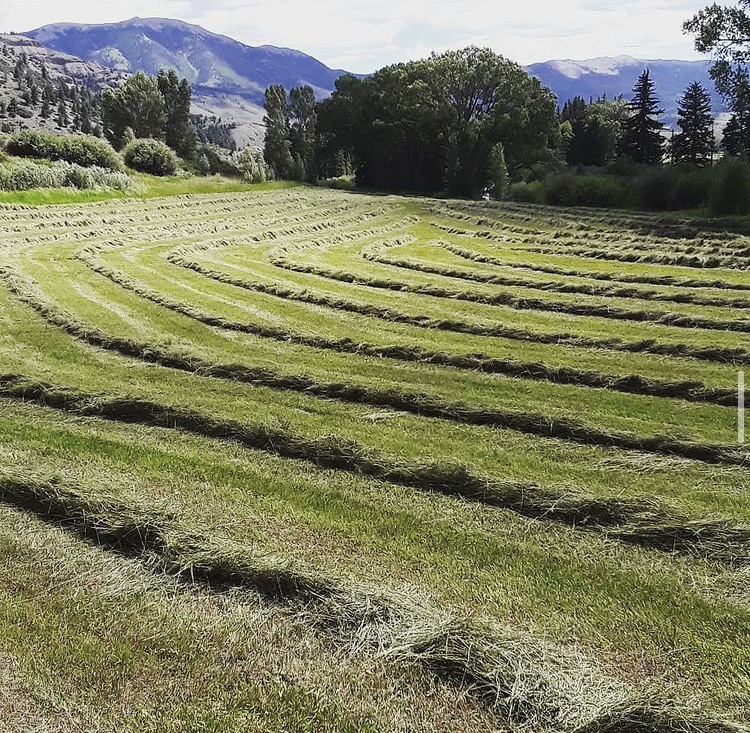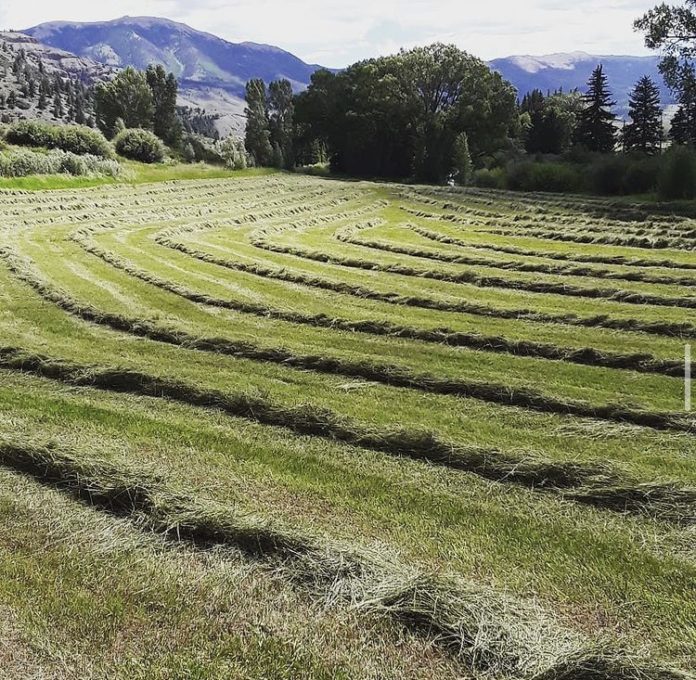by Braun Horner
The process of harvesting hay may not seem too exciting from the outside looking in, but ranchers and farmers know that a good crop yields feed for the cattle, and a freshly cut hay field is pleasant to the eye.
The process has many steps, but after all of the hours irrigating and moving dams from ditch to ditch have paid off, the bales have been stored and equipment prepped for next year, the ranchers can sit back and enjoy the fruit of their labor until it’s time to begin again.

The first step in the harvesting process is clearing out the supply ditch and the lateral ditches it feeds. Getting a good flow is important for the water to spread in large areas. Moving tarp dams and earthen dams as needed, finding the sweet spots and the tough areas, and getting plenty of water to the pasture are important. Once the grass has grown and it’s time to harvest, the rancher shuts the water down, and the grass is ready to dry.

While the grass is drying and being prepared for cutting, prepping the tractors and hay equipment is vital. Once ready and everything is in working order, the rancher gets in the tractor and loads up the mower. It’s time to cut, making the rounds and falling the grass, being sure to follow the ditches and not to go over them. Doing this ensures less strain on the equipment and makes the areas to be cut more prominent. Downed grass must lay and dry out a few days before raking into windrows for baling. Dry hay is good hay.

Cutting the next section hay meadow with the sickle blade.
Next, the rancher sets aside the mower or blade and hooks up the rake. There are different methods and processes, but in this case, the rake will be next. Assuming the weather is good, they cover the dried section and rake up some beautiful windrows. This fluffs and preps the hay for baling. Not only is it necessary, but windrows are a welcomed sight and an indication that progress is being made during the harvest.
Once the windrows are up and dry, it’s time to hook up the baler. While driving over the rows of hay, the baler does its thing, and out come bales, rolled or squared. It’s normally the quickest process, as the hay has been consolidated into rows already. What looks better than a hay meadow cut and full of hay bales ready to be stored?
Now comes the gathering and stacking of bales. Some use bale wagons and stackers to gather bales, saving time, and stacking a number of bales ready to be unloaded inside the high fence. Others use spears on their tractors to pick up the big round bales and load them up on the trailer. The small bales can be tossed and loaded, often the whole family helps, as the more hands, the better.

It’s a lot of work to harvest hay, but seemingly always good to admire a trimmed meadow, with its dew in the morning, and the hay bales in their stacks. Signaling fall is here, and the livestock are taken care of.








